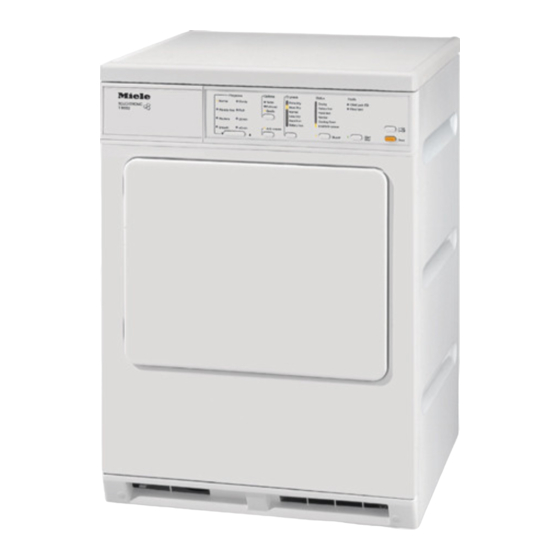Miele TOUCHTRONIC T 8002 Manuel d'utilisation et d'installation - Page 38
Parcourez en ligne ou téléchargez le pdf Manuel d'utilisation et d'installation pour {nom_de_la_catégorie} Miele TOUCHTRONIC T 8002. Miele TOUCHTRONIC T 8002 44 pages. Vented dryer
Également pour Miele TOUCHTRONIC T 8002 : Dimensions du produit (11 pages), Dimensions du produit (6 pages), Manuel d'utilisation et d'installation (44 pages)

Installation
Tips about the duct work
– Check with your local building code
to determine the maximum allowable
duct length.
– Only use rigid or flexible metal duct
for exhausting. Non-metallic flexible
hose should not be used, it is a
potential fire hazard.
– In the United Stated foil-type flexible
ducts should only be used if
identified for use by the manufacturer
as compliant with the Outline for
Clothes Dryer Transition Duct,
Subject ANSI/UL 2158A.
In Canada, only flexible metal
(foil-type) ducts specifically identified
for use by the manufacturer should
be used.
– For best drying results avoid extra
long ducting with too many bends,
angles or tight corners.
– Do not assemble the duct with
screws or other fastening devices
that extend into the duct and catch
lint.
34
– The shorter the exhaust duct work,
the more efficient the dryer will be.
Expelled air is slowed down in the
ducts due to friction against the inner
walls. The shorter and smoother the
inner walls are, the less friction will
be created.
– An elbow or bend creates more
friction than a straight duct. An
additional duct length factor must be
added for each elbow or bend (see
the "Additional duct lengths" table).
This factor expresses the resistance
of the bend in terms of a straight
length of duct.
The additional length factor is then
added to the existing duct to give the
effective length.
A larger duct diameter helps reduce
friction. Therefore the duct diameter
and length should be increased
simultaneously.
